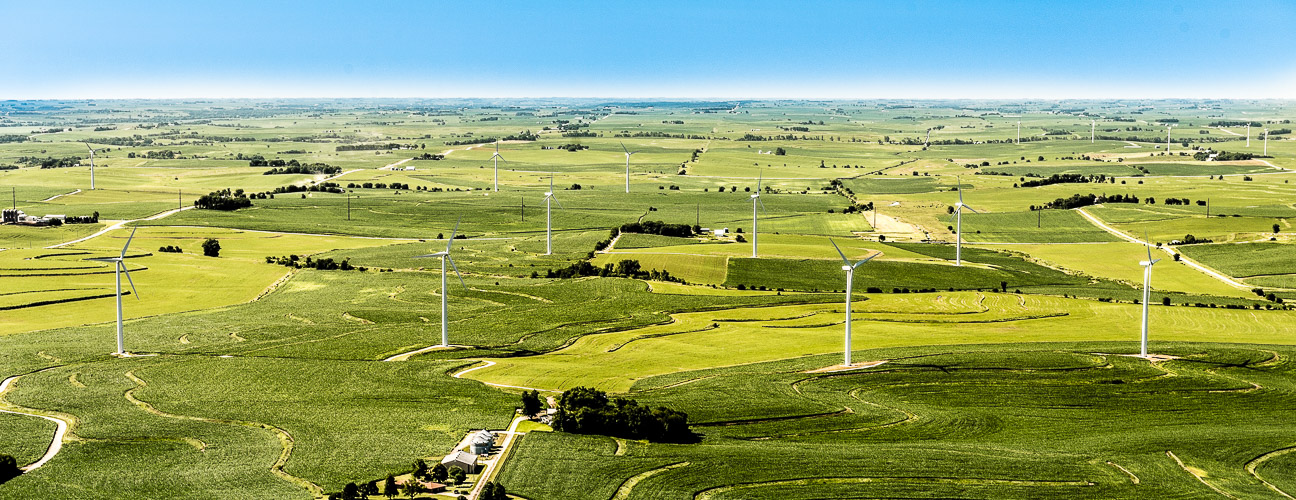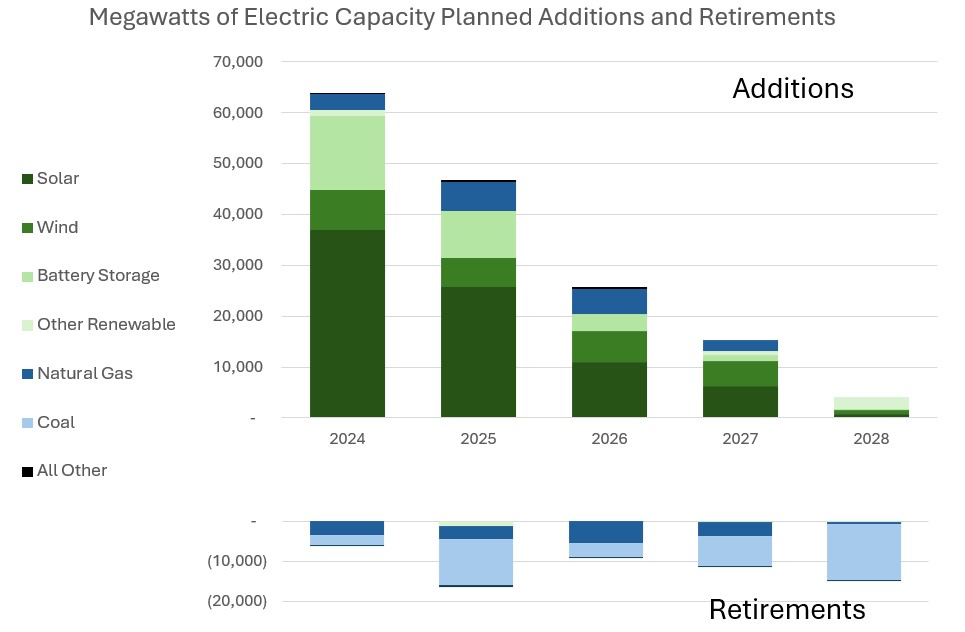Winds of Change: Renewable Energy Set to Grow in Rural America, Powering New Opportunities

The pace of renewable power generation and storage growth has surged in recent years. According to the International Energy Agency, renewables are set to account for 95% of the net increase in global power capacity through 2025, surpassing natural gas and coal to become the largest source of worldwide electricity generation. In the U.S., renewable energy generation is expected to increase in the next few years, driven by favorable policies, technological innovations, and cost reductions.
One of the fastest-growing renewable energy sources in the U.S. is solar power, which has seen remarkable growth in recent years. According to the U.S. Energy Information Administration (EIA), solar photovoltaic (PV) capacity increased by 32% in 2023, reaching 163 gigawatts (GW). The EIA forecasts that solar PV will account for more than 65% of all renewable capacity additions through 2025, reaching 172 GW by the end of that year. According to EIA estimates, solar PV alone could provide nearly 14% of the total U.S. electricity capacity in 2025, up from 8% in 2023.
Another important renewable energy source in the U.S. is wind power, which has experienced significant growth in recent years. According to the EIA, U.S. wind capacity increased 6% in 2023 to 149 GW. The EIA projects that wind will account for 30% of all renewable capacity additions through 2025, reaching 162 GW by the end of that year. Wind alone could provide an estimated 13% of the total U.S. electricity capacity in 2025.
The graph below highlights the current expectations of additions and retirements to U.S. electricity capacity in the coming years. Additions tend to be concentrated in the next two years, while retirements are more balanced based on the age and technology of the generating assets. More additions will likely be announced in future years, which could balance out future additions and retirements. Bloomberg New Energy Finance projections show a steady increase in renewable capacity additions through 2035 before slowing down. EIA data on planned additions includes only announced renewable projects.

One of the advantages of renewable energy is that it can bring economic opportunities and benefits to rural areas, where many of the solar and wind projects are located. According to a report by the International Energy Agency, renewable energy projects can provide income, employment, and social services for rural communities and improve access to electricity. Texas and California have the most capacity planned and announced by the EIA between 2024 and 2028, with over 65 gigawatts of generation capacity planned and over 90% of that capacity to come from renewable power sources.
Want a closer look? Just maximize this tool by clicking on the full-screen button in the bottom right.
However, the growth of renewable energy also faces challenges in grid integration, storage, and transmission. To ensure a reliable and resilient electricity system, renewable energy sources must be integrated with conventional power plants, energy storage systems, and transmission networks. This requires investments in infrastructure, smart grid technologies, and regulatory frameworks. The EIA estimates that the U.S. will need to add 42 GW of battery storage capacity by 2025, an increase of 89% from 2023, to support the growth of solar and wind power. There are already more than 13 GW of battery storage projects planned for 2024 and 2025, primarily in California and Texas, where the most solar PV projects are also planned. The EIA also expects that the U.S. will need to expand its transmission capacity by 7% by 2025, mainly to connect renewable energy projects in rural areas to load centers in urban areas.
In conclusion, renewable energy is set to play a big part in the future of the U.S. electricity system, as it offers potential economic, environmental, and social benefits. Investment is heavily focused in rural and ex-urban areas. However, the implementation of renewable energy also requires careful planning, coordination, and innovation to overcome the technical and institutional barriers. The U.S. has the potential and the opportunity to be a leader in the global energy transition. Rural America is poised to be central in the investment in future energy production.










